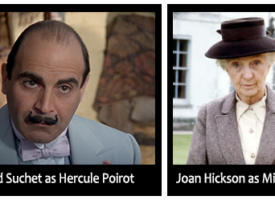People write memoirs or autobiographies for a number of reasons, but one thing we can expect as we go through the process is a deeper understanding of ourselves. As we recall and record our life stories, we learn a great deal about who we are and how we came to be the persons we are. Writing an autobiography can also give us some direction for the future.
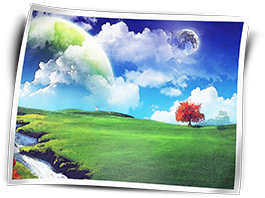 I found this to be true as I wrote my own autobiography. Instead of writing a general autobiography covering different facets of my life, I decided to focus on my relationship with the natural world—or what some might call our ecological identity. I completed my ecological autobiography several years ago and have since conducted workshops leading others through the process. The results have been quite rewarding.
I found this to be true as I wrote my own autobiography. Instead of writing a general autobiography covering different facets of my life, I decided to focus on my relationship with the natural world—or what some might call our ecological identity. I completed my ecological autobiography several years ago and have since conducted workshops leading others through the process. The results have been quite rewarding.
An autobiography with a specific focus is sometimes called a “focused autobiography.” While I chose to focus on my ecological identity, there are many other facets of life that might be chosen. Some people write a spiritual autobiography as a tool for understanding and enhancing their spiritual development. Teachers—or students preparing to become teachers—might write an educational autobiography to help them identify priorities and goals for their professional development. Architects sometimes write place-based autobiographies for inspiration on how to connect their work with the spirit of a place. Being a parent, volunteering, or participating in a particular sport could also be the focus of an autobiography.
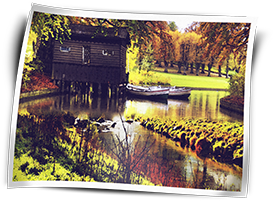 I chose the ecological focus because of my ongoing fascination with the natural world. While I’ve been a “nature lover” as long as I can remember, I wasn’t always clear about how my relationship with the natural evolved over time and how this brought meaning to my life. Writing an ecological autobiography helped me understand more fully some of the decisions I made over the years in both my personal and professional life—including decisions about where to live and how to invest my time and energies. Writing my ecological autobiography has also given me a clearer understanding about where I want to go from here. By the time I wrote the last section of my ecological autobiography, I had arrived at certain understandings about my essential self and where I stand in relation to the natural world. I used these understandings to write several affirmations about how I wanted to live. “Respecting life in all its forms” and “appreciating the beauty in the world around me” are two of these affirmations.
I chose the ecological focus because of my ongoing fascination with the natural world. While I’ve been a “nature lover” as long as I can remember, I wasn’t always clear about how my relationship with the natural evolved over time and how this brought meaning to my life. Writing an ecological autobiography helped me understand more fully some of the decisions I made over the years in both my personal and professional life—including decisions about where to live and how to invest my time and energies. Writing my ecological autobiography has also given me a clearer understanding about where I want to go from here. By the time I wrote the last section of my ecological autobiography, I had arrived at certain understandings about my essential self and where I stand in relation to the natural world. I used these understandings to write several affirmations about how I wanted to live. “Respecting life in all its forms” and “appreciating the beauty in the world around me” are two of these affirmations.
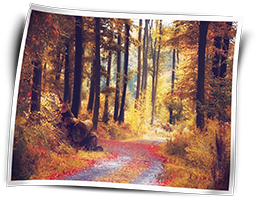 We learn about our essential self through the things we love and are drawn to. Susan, a participant in one of my ecological autobiography workshops, wrote about her love for the woods behind her childhood home in West Virginia. Susan found that writing about the experiences she had in that special place proved to be “good for her soul.” The process also helped her identify four shifts in her relationship with the natural world. As a young child, the woods was her playground—a place to roam, to run freely, and to explore.
We learn about our essential self through the things we love and are drawn to. Susan, a participant in one of my ecological autobiography workshops, wrote about her love for the woods behind her childhood home in West Virginia. Susan found that writing about the experiences she had in that special place proved to be “good for her soul.” The process also helped her identify four shifts in her relationship with the natural world. As a young child, the woods was her playground—a place to roam, to run freely, and to explore.
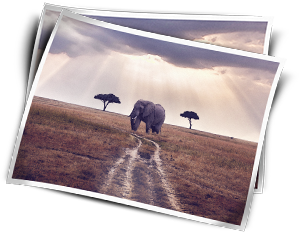 During her middle childhood years, the woods became a classroom where her observations, explorations, and experiments with nature became more focused and intentional. As Susan got older, she began to develop feelings towards the woods and the rest of the natural world that went beyond simple enjoyment and fascination. She realized that she had a responsibility for taking care of it. Over time, Susan also discovered that there was something about nature that nurtured her spirit in a profound and lasting way. She referred to this stage of her relationship with nature as the “friendship stage.”
During her middle childhood years, the woods became a classroom where her observations, explorations, and experiments with nature became more focused and intentional. As Susan got older, she began to develop feelings towards the woods and the rest of the natural world that went beyond simple enjoyment and fascination. She realized that she had a responsibility for taking care of it. Over time, Susan also discovered that there was something about nature that nurtured her spirit in a profound and lasting way. She referred to this stage of her relationship with nature as the “friendship stage.”
Susan was a college student when she first wrote her ecological autobiography. She’s currently working as a wildlife biologist and looking forward to when she will have her own children and introducing them to the wonders of the natural world.
How to Write an Ecological Autobiography
Susan’s ecological autobiography is about 22 pages long. Mine is over 100 pages in length. But length isn’t what matters. The core of a well-written autobiography emerges from insights and reflection. Facts and experiences are important parts of an autobiography, but an autobiography represents more than a recording of dates and events. A well-developed autobiography makes connections between past and present and between self and the outside world. It explains the uniqueness and meaning of one’s life.
If you decide to write your own ecological autobiography, you might find the following four steps helpful.

Recall and briefly describe your most vividly-remembered nature related experiences from your past. You may wish to divide this step into different chronological periods of your life, such as early childhood, middle childhood, adolescence, young adulthood, and later adulthood. For each period, you might use the following questions as a guide.

- What memories do you have about specific aspects of nature, such as animals, plants, weather, water, or sky?
- When you were younger, did you have special outdoor places that you enjoyed?
- What do you remember about these places? What made them special? What did you usually do in these places?
- What nature-related activities did you most enjoy—hiking, fishing, exploring, gardening, etc.?
- Have you had special moments when you felt especially close to nature—moments that helped you feel the beauty, power, or oneness of nature?

Identify which of your nature-related experiences most closely reflect the essence of your evolving relationship with the natural world. This step should take you beyond a literal and chronological description of your experiences. The goal here is to interpret or find meaning in your experiences. The following questions might be helpful.

- What nature-related experiences gave you a sense of well-being or filled you with joy or a sense of exuberance?
- Have you ever felt a special closeness or an “at-oneness” with nature?
- How have nature-related experiences influenced your decisions and actions?

Identify recurrent themes in your experiences and in your reflections on those experiences. A part of this step could include comparing your experiences and insights with the views of others, but the most critical part is identifying recurrent themes in your own relationship with nature. The following suggestions might help you in working through this step.

- Re-read what you’ve written thus far with an eye toward identifying major ideas and recurrent themes.
- Make a list of one-statement sentences articulating what you’ve identified as major themes.
- Group your statements into different categories (e.g., exploration, discovery, delight, challenge, etc.).

Develop a personal statement about what you believe and value in your relationship with the natural world. This step basically entails weaving your insights into a coherent description about what you believe and value. This description may also include some ideas about how your new understandings might influence your future decisions and actions. Following are a few questions you may wish to consider as you reach this stage in writing your ecological autobiography.

- How does your relationship with nature compare with how you felt about nature at earlier times in your life?
- How do you feel about the changes you’ve experienced over time in relationship with nature?
- Do you anticipate and/or hope for other changes in this relationship?
Conclusion
Writing an ecological autobiography isn’t easy. The process requires dedication and soul-searching. But the rewards are sweet. You’ll discover new aspects about yourself and the world around you. You’ll also realize that your ecological self is a part of you that can grow over time. Writing your ecological autobiography will nurture this special part of your identity.
About the author:
Dr. Ruth Wilson works as an educational consultant and curriculum writer, with special expertise in the areas of early childhood environmental education and the development of language and literacy. Dr. Wilson’s career includes working as a classroom teacher in both regular and special education settings and as a teacher educator for over ten years at Bowling Green State University in Ohio.
Dr. Wilson’s published books include Nature and Young Children, Fostering a Sense of Wonder during the Early Childhood Years, and Special Educational Needs in the Early Years. Dr. Wilson’s articles have appeared in numerous publications including Environmental Education Research Journal, Green Teacher, Early Childhood News, Exchange, and American Forests. Dr. Wilson lives and works in Albuquerque, NM. She can be contacted at [email protected].
Also by Ruth Wilson:
1. Writing Poetry for Children (article)
2. How to Use the Power of Poetry to Enhance Your Writing and Life (article)
3. Journaling in the Natural World (article)
